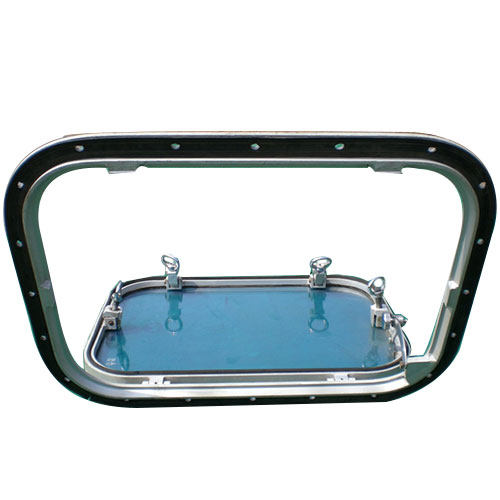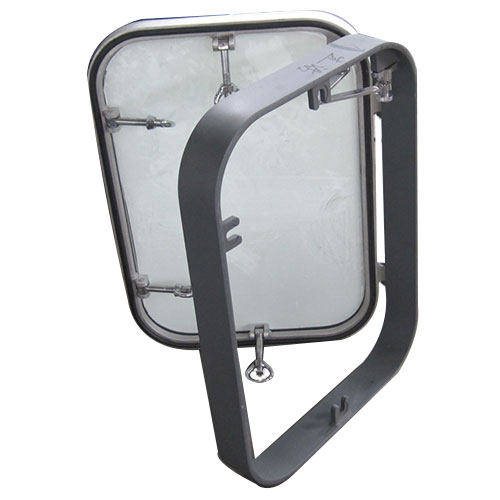What is the Impact of Climate Change on Marine Windows: How to Mitigate
The effects of climate change on marine windows have become increasingly evident. From coral reefs to polar seas, the repercussions of climate change are altering marine windows and the ecosystems they represent in significant ways.

The Crucial Role of Marine Windows in Marine Ecosystems
Marine windows, metaphorical portals into the underwater world, play a critical role in our understanding and observation of marine ecosystems. These windows, which encompass various forms such as coral reefs, polar ice caps, and coastal regions, are not only essential for scientific research but also serve as barometers of the health of our oceans.
Below is a chart summarizing key aspects of understanding marine windows.
| Aspect | Description |
| Materials | Typically made of glass, acrylic, or polycarbonate, with frames constructed from materials such as aluminum, stainless steel, or fiberglass. |
| Types | Fixed Windows: Stationary, non-opening windows. Sliding Windows: Horizontal or vertical sliding mechanism for opening and closing. Hinged Windows: Swing open on hinges for ventilation. |
| Design Considerations | Strength to withstand water pressure and impacts. Resistance to corrosion and UV degradation. Optimal size and shape for visibility and aesthetics. |
| Regulations | Compliance with international maritime standards for safety, visibility, and structural integrity (e.g., SOLAS, Classification Society rules). |
| Safety Features | Tempered or laminated glass for impact resistance. Emergency release mechanisms for escape routes. Fire-rated windows in certain areas. |

The Impact of Climate Change on Marine Windows
1. Coral Reefs: Fragile Ecosystems Under Pressure
Coral reefs, often referred to as the rainforests of the sea, are among the most biodiverse ecosystems on the planet. They provide habitat and sustenance for countless marine species and act as natural barriers against coastal erosion. However, climate change has placed unprecedented stress on coral reefs, leading to widespread bleaching events and degradation.
- Temperature Stress: Rising sea temperatures result in coral bleaching, a phenomenon where corals expel the algae living in their tissues, turning them white. Prolonged bleaching events weaken corals and increase their susceptibility to disease and mortality.
- Ocean Acidification: The absorption of excess carbon dioxide by the oceans leads to acidification, which inhibits coral growth and disrupts the delicate balance of calcium carbonate deposition essential for reef formation.
- Extreme Weather Events: Increasing frequency and intensity of storms and cyclones due to climate change can physically damage coral reefs, causing fragmentation and destruction of reef structures.
2. Polar Regions: Melting Ice and Shifting Landscapes
The polar regions, characterized by vast expanses of ice and unique ecosystems, are experiencing some of the most rapid changes attributed to global warming.
- Loss of Sea Ice: Arctic sea ice extent continues to shrink, affecting marine habitats and altering oceanic currents. This loss of habitat threatens species like polar bears, seals, and walruses that rely on sea ice for breeding, hunting, and resting.
- Thinning Ice Sheets: In Antarctica, warming temperatures contribute to the thinning of ice shelves and glaciers, leading to increased calving and the release of freshwater into the ocean. These changes impact marine life and ocean circulation patterns.
- Altered Ecosystem Dynamics: Changes in ice cover and temperature regimes disrupt the delicate balance of polar ecosystems, affecting primary producers, such as phytoplankton, and cascading through the food web to impact higher trophic levels.
3. Coastal Zones: Frontlines of Human-Induced Changes
Coastal regions, where land meets the sea, are highly vulnerable to the impacts of climate change and human activities.
- Sea Level Rise: Rising sea levels threaten coastal communities, infrastructure, and ecosystems. Low-lying areas face increased flooding and saltwater intrusion, endangering freshwater sources and coastal vegetation.
- Habitat Loss and Degradation: Coastal development, pollution, and overfishing degrade marine habitats such as mangroves, seagrass beds, and estuaries. These habitats provide essential services, including nursery grounds for fish, carbon sequestration, and shoreline stabilization.
- Ocean Pollution: Climate change exacerbates ocean pollution, leading to phenomena like marine debris, harmful algal blooms, and nutrient runoff. These pollutants degrade water quality, harm marine life, and disrupt ecosystem functioning.

Effective Strategies to Mitigate the Impact of Climate Change on Marine Windows
Mitigating the impact of climate change on marine windows requires a multi-faceted approach that addresses both the root causes of climate change and the specific vulnerabilities of marine ecosystems.
1. Reduce Greenhouse Gas Emissions
- Transition to renewable energy sources such as solar, wind, and hydroelectric power to reduce reliance on fossil fuels.
- Implement energy efficiency measures in industries, transportation, and buildings to decrease overall greenhouse gas emissions.
- Encourage international cooperation and agreements to limit carbon emissions and strengthen commitments outlined in agreements like the Paris Agreement.
2. Protect and Restore Marine Ecosystems
- Establish and expand marine protected areas (MPAs) to conserve critical habitats such as coral reefs, seagrass beds, and mangroves.
- Implement sustainable fisheries management practices to prevent overfishing and promote the recovery of fish stocks and marine biodiversity.
- Support habitat restoration projects to rehabilitate degraded marine ecosystems and enhance their resilience to climate change impacts.
3. Adaptation Strategies for Vulnerable Ecosystems
- Develop and implement adaptation strategies tailored to the specific needs of vulnerable marine ecosystems, such as coral reefs and polar regions.
- Enhance resilience through measures such as assisted migration of species, artificial reef structures, and coral transplantation efforts.
- Invest in research and monitoring programs to better understand the dynamics of marine ecosystems and identify effective adaptation measures.
3. Reduce Coastal Vulnerability
- Implement coastal management strategies such as beach nourishment, dune restoration, and the construction of living shorelines to mitigate erosion and protect coastal habitats.
- Adopt sustainable land-use planning practices to minimize coastal development in high-risk areas and preserve natural buffers such as wetlands and mangroves.
- Promote community-based approaches to climate adaptation and resilience-building, involving local stakeholders in decision-making processes and knowledge exchange.
4. Enhance Ocean Governance and International Cooperation
- Strengthen governance frameworks at local, national, and international levels to address climate change impacts on marine ecosystems.
- Foster collaboration among governments, scientists, NGOs, and local communities to share knowledge, resources, and best practices for marine conservation and climate adaptation.
- Support initiatives that promote sustainable ocean management and the integration of climate considerations into marine policy and planning processes.
5. Raise Awareness and Mobilize Action
- Increase public awareness about the importance of marine ecosystems and the urgent need to address climate change impacts on these systems.
- Engage stakeholders through education, outreach, and advocacy campaigns to foster stewardship of marine environments and support climate-resilient practices.
- Empower local communities, indigenous peoples, and youth to participate in conservation efforts and contribute to sustainable marine management initiatives.

Conclusion
The impact of climate change on marine ecosystems, as observed through the windows provided by coral reefs, polar seas, and coastal zones, underscores the urgent need for collective action. Protecting these vital ecosystems requires a holistic approach that addresses both the root causes and the immediate consequences of climate change. By safeguarding marine windows, we not only protect the biodiversity and ecological integrity of our oceans but also secure the well-being of present and future generations.


